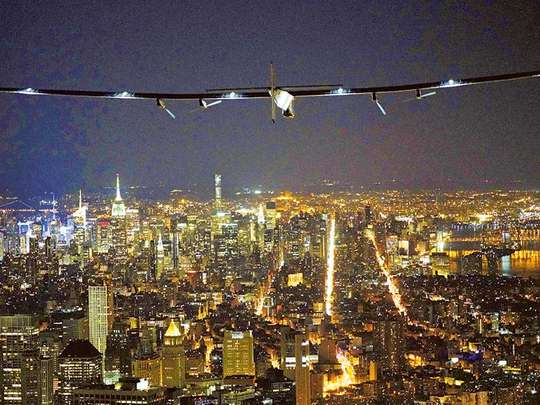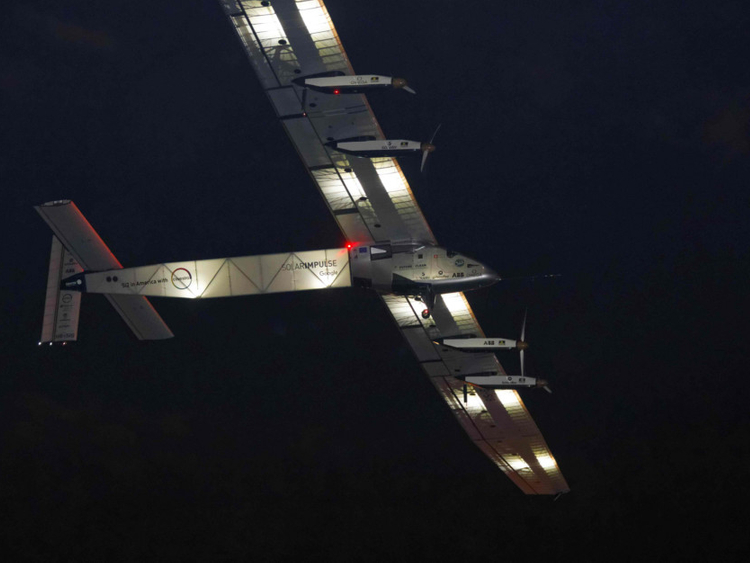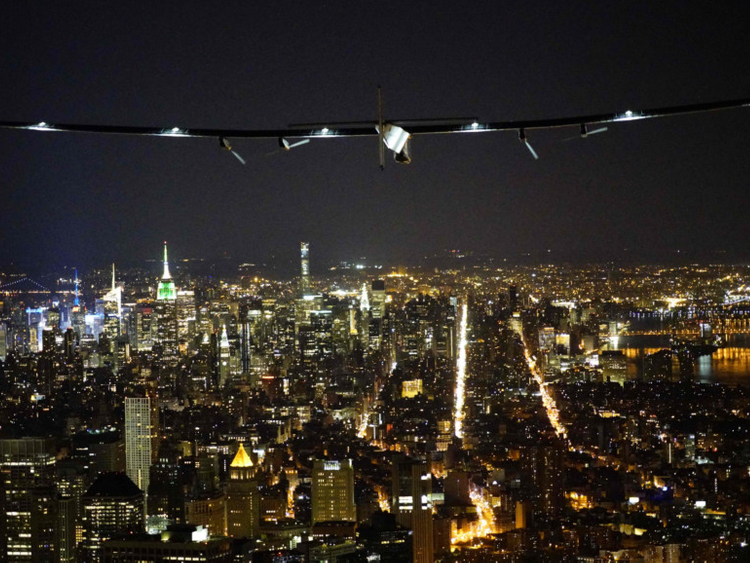
Abu Dhabi: The sun-powered Solar Impulse 2 aircraft set off from New York’s JFK airport early Monday, embarking on the transatlantic leg of its record-breaking flight around the world to promote renewable energy.
The flight, piloted by Swiss adventurer Bertrand Piccard, is expected to take about 90 hours — during which Piccard will only take short naps — before landing at Spain’s Seville airport.
“It’s my first time taking off from JFK,” Piccard said over a live feed from the aircraft as he headed into the night sky at approximately local time 2.30am (UAE 10.30am)
The voyage marks the first solo transatlantic crossing in a solar-powered aeroplane, and is one of the most difficult legs in Solar Impulse 2’s journey around the world.
“Goodbye #NewYork! Now looking forward to the vast expanse of the #Atlantic Ocean and reaching Europe in a few days,” Piccard tweeted, posting a picture of the darkened sky and city lights below.
The plane, which is no heavier than a car but has the wingspan of a Boeing 747, is being flown on its 35,000-kilometre trip by two pilots taking turns, Piccard and Swiss entrepreneur Andre Borschberg.
“I’m in the cockpit this time, but we’re flying together,” Piccard told Borschberg before take-off.
The pair have alternated legs of the journey, with Borschberg piloting the flight’s final Pacific stage, a 6,437-kilometre flight between Nagoya, Japan and Hawaii.
The 118-hour leg smashed the previous record for the longest uninterrupted journey in aviation history.
The plane, now on the 15th leg of its east-west trip, set out on March 9, 2015, in Abu Dhabi, and has taken the aircraft across Asia and the Pacific to the United States with the sun as its only source of power.
Prince Albert of Monaco, a patron of the project, gave the flight the go-ahead from its mission control centre in Monaco, telling Piccard “you are released to proceed.”
A third of the journey still remains for the plane, which will fly through Europe and on to the Middle East back to Abu Dhabi after crossing the Atlantic.
The single-seat aircraft is clad in 17,000 solar cells. During night-time flights it runs on battery-stored power. This is the first time a solar aeroplane is flying at night. Solar planes had flown before, but only during the day and without the capacity to store energy.
Solar Impulse-2 typically travels at a mere 48 kilometres per hour, although its flight speed can double when exposed to full sunlight.
Piccard and Borschberg are no strangers to adventure.
Piccard, a psychiatrist, made the first non-stop balloon flight around the world in 1999. Meanwhile, Borschberg only narrowly escaped an avalanche 15 years ago and in 2013 survived a helicopter crash with minor injuries.
The idea of a solar-powered plane originated when Dr Bertrand Piccard’s historic balloon flight was nearly jeopardised due to its dependency on fossil fuel. Of the 3.7 tonnes of liquid propane on board at take-off, only 40kg remained when the balloon landed.
Dr Piccard promised himself that he would circumnavigate the globe again, but without fossil fuel.
— With inputs from AFP














